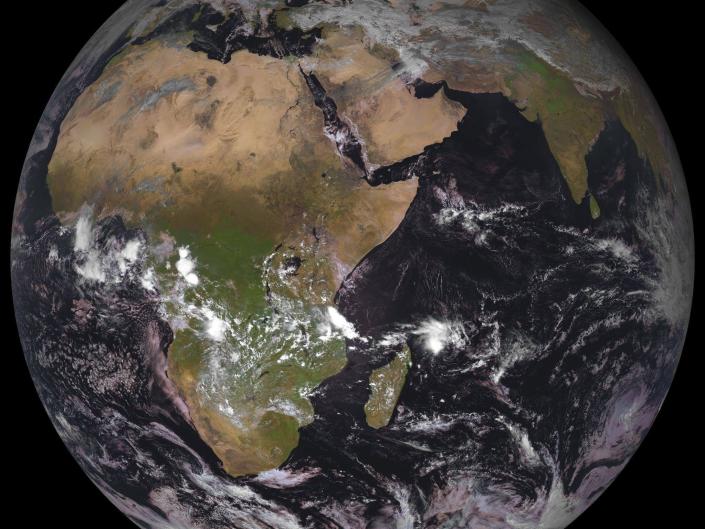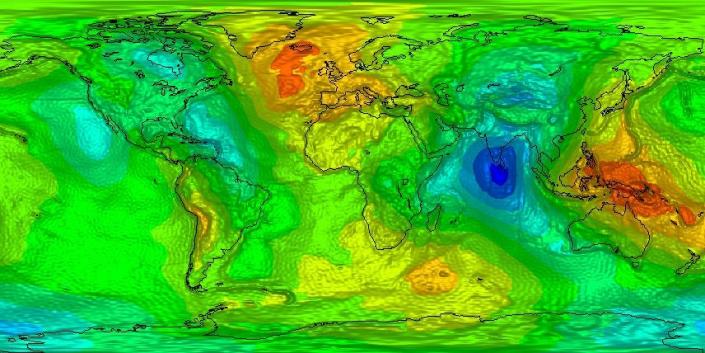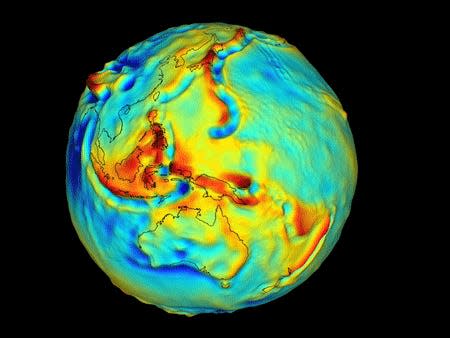
-
There is a gravity hole in the Indian Ocean where the ocean level is about 300 feet lower than the surrounding areas.
-
Local gravity is slightly lower there, which has puzzled scientists.
-
The gravitational hole may have been caused by an ancient ocean floor that sank millions of years ago.
There is a huge gravity hole in the middle of the Indian Ocean that has baffled scientists for decades.
The million-square-mile anomaly is not a physical hole, but an area of the ocean where Earth’s gravity is less than average.
Scientists studying the “hole” have long thought there must be something underneath it that’s causing the strange effect.
But a new study suggests researchers should have looked around, not below, the gravitational hole to solve the mystery of how it formed.
They say plumes of molten rock rising from the remains of an ancient ocean bed may be to blame.
A million-square-mile gravity hole that’s pulling the oceans down

Gravity varies slightly on the surface of the globe.
Most of these variations can be easily explained. A dense continent, for example, may have more mass and therefore slightly more gravity than, say, an area where the crust is thinner.
But scientists have struggled to explain the gravitational hole in the Indian Ocean, known as the Indian Ocean low-lying geoid.
The difference in gravity isn’t huge. You certainly wouldn’t be able to notice it if you were right in the middle of the anomaly, Bernhart Steinberger, a geodynamics researcher at the German Research Center for Geosciences GFZ, told Insider.
But it’s quite significant that ocean levels above the 1.1 million square mile zone are about 300 feet lower than the surrounding oceans.
“I think what people generally assume is that there must be something low density underneath that’s causing it,” Steinberger said.
“But in that paper, they actually have a different theory,” he said.
To understand the anomaly, scientists had to look around the hole

To figure out what’s causing the hole, geophysicist Attreyee Ghosh and graduate student Debanjan Pal of the Indian Institute of Science in Bangalore asked a computer to simulate what might have happened.
They plotted 19 different scenarios looking at how the tectonic plates may have shifted around the hole over the past 140 million years.
Their study, published in Geophysical Research Letters in May, found that only a few scenarios could explain the gravity hole, and in none of these models was the low gravity caused by what lay directly beneath it.
Instead, they found the hole was likely caused by plumes of low-density magma.
“It’s something you might have thought of before, you just wouldn’t think about it because you tend to think there must be something going on,” said Steinberger, who was not involved in the study.
“You have like a negative clipping,” she said.
It dates back to 120 million years ago
The most likely explanation for the gravity hole dates back to the separation of Gondwana, the supercontinent at the origin of Africa, Australia and India, about 120 million years ago, according to the study.
When India separated from Africa and slammed into the European plate, the ocean that was there before, called Tethys, was split and squeezed between the continental plates.
A few tiny parts of the plate are still present in the Mediterranean, but most of that plate is still slowly melting deep inside the Earth around East Africa. As the dense mantle melts, it creates plumes of low-density magma, contributing to the low-gravity area.
At the same time, surrounding landmasses such as the Tibetan Plateau create high gravity, amplifying the effect, Steinberger said.
Looking ahead, ocean surveys will need to confirm that these plumes exist in real life, not just on computers, Himangshu Paul of the National Geophysical Research Institute in India told New Scientist.
Read the original article on Business Insider
#huge #gravity #hole #middle #Indian #Ocean #Scientists #theyve #finally #figured #whats #causing
Image Source : news.yahoo.com
